It’s rough shooting, but not as we know it. Jarrod Spilger provides a fascinating glimpse into the pheasant shooting scene in the wilds of Nebraska

Pheasant hunting enjoys a loyal following among American upland hunters – as it does in the UK – but the manner in which pheasants are hunted is quite different.
Sure, there are some preserves that occasionally offer driven-style shoots on released, pen-raised birds, but for the most part American style pheasant hunting involves wild birds and what Brits would refer to as ‘rough shooting’.
The closest thing to a driven hunt typically encountered over here is when a party of hunters divides into two groups: walkers and blockers.
Walkers are comparable to beaters in the UK, except they carry guns. They begin at one end of the field, usually a field of harvested corn rows, and walk towards the blockers standing guard at the opposite end ready to intercept any escaping roosters. Of course, the walkers must defer shots to the blockers as they get closer for safety’s sake. Likewise, blockers must be mindful of the walkers’ location at all times. That’s why many American upland hunters wear blaze orange caps and vests rather than tweeds.
Personally, I’m not a fan of the big group hunt. Instead, I prefer to hunt pheasants solo: just me, my dog and the birds. I sometimes tolerate a second hunter (usually my dad) and maybe even a second dog, but I typically prefer it to be just Phantom and me.
Phantom is my Small Munsterlander pointer. Now in her seventh season, she’s finally caught onto the wild rooster game. It took some time, though, and a few trips to the preserve for practice on released birds. Wild roosters can wreak havoc with a young pointing dog, since they often prefer to run rather than hold.
This story is from the {{IssueName}} edition of {{MagazineName}}.
Start your 7-day Magzter GOLD free trial to access thousands of curated premium stories, and 9,000+ magazines and newspapers.
Already a subscriber ? Sign In
This story is from the {{IssueName}} edition of {{MagazineName}}.
Start your 7-day Magzter GOLD free trial to access thousands of curated premium stories, and 9,000+ magazines and newspapers.
Already a subscriber? Sign In

RSPB gives mixed message on shooting
Having recently attended the RSPB’s virtual AGM, Conor O’Gorman discusses the outcome of the charity’s year-long review of game bird shooting

Causeway for concern
Alan Jarrett’s renewed interest in reading takes him down memory lane to an offshore island duck flight that very nearly ended in disaster

Through a purple patch
The Garrows Estate is taking a conservation-focused approach to restoring the wildlife populations and biodiversity on the Scottish heather moorland.
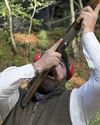
When the wheels fall off
Losing form on a day’s shooting can be infuriating, especially if you’ve been shooting like a god up to that point. Simon O’Leary looks at some common causes and how to remedy them
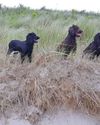
Beaches, books & bad behaviour!
The annual Kay family vacation to Northumberland offers a chance to give the cockers a blast on the beach – although they don’t always shower themselves in glory, as Ryan Kay recalls...

Using the Stop whistle
Now you’ve instilled the basics, it’s time to up the ante with some more tricky distance work. Howard Kirby explains how to take the core Stop whistle command to the next level
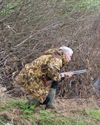
The humble teal
They may be tiny, but as far as Rupert Butler is concerned, the appeal of this little duck is huge. He recalls some of his most memorable nights in pursuit of these aerial acrobats
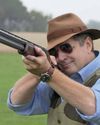
Fab all-rounder
Mike is impressed with the Fabarm Elos B2 Field Notte, which offers great value for money, is suited to fieldwork or clays and is future-proofed for use with steel in all choke constrictions

CALL OF THE WILD
Dom Holtam reconnects with one of the purest forms of shotgun shooting as he walks-up woodcock over pointing dogs in the Scottish Highlands
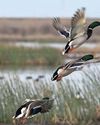
A yen for the Fens
Tony Jackson recounts a memorable duck flight over an area of Fenland in Norfolk with his friend and author, the late Alan Savory